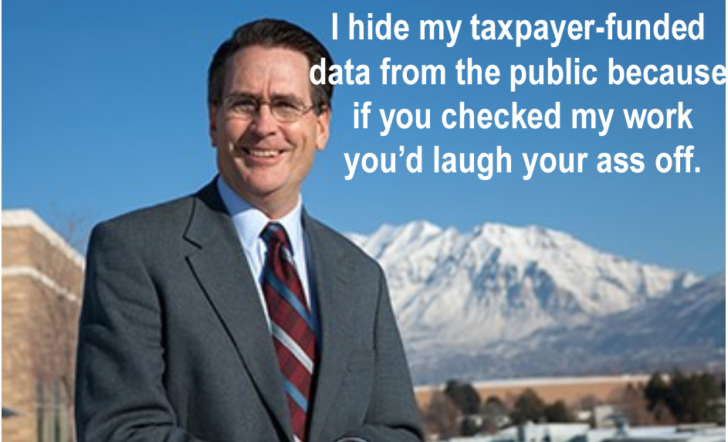False. All that’s needed is more honesty and its corollary, transparency.

No one dies from air quality. No one. The only reason the myth of killer air pollution survives is because dishonest researchers like Harvard’s Doug Dockery and Brigham Young’s Arden Pope have been allowed by the scientific establishment and EPA to hide their data from public scrutiny for more than 20 years.
The media release is below.
###
Better data needed to monitor the impact of air pollution on health and climate
TAYLOR & FRANCIS GROUP
As debates rage about the growing threat of poor air quality to human health, scientists still lack enough of the right data to help governments accurately model and mitigate air pollution and its effects, according to a new study published in the Journal of the Air and Waste Management Association.
To help policymakers make better, more informed decisions, there is an urgent need for more detailed information about the location and timing of pollutant emissions. Current data gaps are leading to large uncertainty in emission figures (of up to 50%).
In 2015, air pollution contributed to 6.5 million deaths worldwide from diseases such as heart disease, stroke, and lung cancer. In this new analysis, environmental scientists review the methods that are being used to model pollutant emissions around the world.
3D atmospheric chemistry transport models are crucial tools for assessing regional and local air quality, and play a vital role in linking global and regional emission data to health and climate. However, the reliability and usefulness of these models depend on the accuracy and quality of information about how, where, and when pollutants are emitted into the atmosphere from human activities and natural sources.
Most current emission inventories only provide annual emission totals based on national estimates, and do not report spatial (location) and time trends with the precision, accuracy, and resolution needed to improve air quality models results. While regional inventories capture more detailed information, these data do not exist in several regions including Africa and South America.
In recent years, new methods have been developed to provide a better understanding of spatial and timing variations for some emission sectors. For example, studies of ammonia emissions (which derive mostly from livestock waste and nitrogen fertilizers) have considered type of animal housing, timing of fertiliser application, and meteorological conditions (e.g. temperature, wind speed) to reveal large discrepancies with global inventories.
The researchers believe that there is also potential to improve emission estimates by exploiting big data gathered from information technologies in most areas of daily life–for example, tapping into large data sources already collected by authorities and companies like Google, such as road traffic flow or satellite observations on land use and plant growth. Armed with this data, they say, it may be possible to refine estimates of emissions to get a more accurate picture of what is going on, and improve our pollution forecasts.
Lead author Dr Volker Matthias from Helmholtz-Zentrum Geesthacht in Germany emphasises that emission reports must be updated more frequently and include more detail: “In a world where emission patterns are changing rapidly, it is crucial to use new types of statistical and observational data to create detailed emission data sets and keep inventories up-to-date.”
###